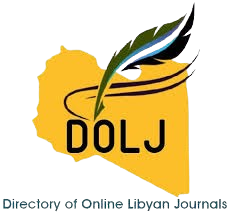التضحية بالحيوانات في الديانة الرومانية: بين الطقس، والسلطة، والرمز
DOI:
https://doi.org/10.59743/الكلمات المفتاحية:
التضحية بالحيوانات، السلام الإلهي، مقدم الأضحية، الموكب، التكريس، قبول الأضحيةالملخص
مثّلت التضحية بالحيوانات أحد الركائز الجوهرية في الطقوس الدينية الرومانية، إذ جسّدت العلاقة التعبدية التي يقرّها البشر تجاه الآلهة. غير أن وظيفتها تجاوزت البُعد الشعائري البحت، لتغدو وسيلة فعّالة للتواصل مع القوى الإلهية، وقناةً لنقل إرادتها إلى العالم البشري. فقد أتاحت هذه الطقوس إمكانية استشارة الآلهة من خلال تفسير علامات محددة، أبرزها ما يُستخلص من فحص أحشاء الحيوان المُضحّى به. هذه الممارسة لم تكن مجرد فعل ديني فردي، بل شكّلت طقسًا جماعيًا ذا طابع أدائي، ساهم في ترسيخ التماسك الاجتماعي، وتعزيز الهوية الجماعية، مُكرّسًا البنية الهرمية والتقاليد التأسيسية للمجتمع الروماني. كما اكتسبت التضحية بُعدًا سياسيًا بالغ الأهمية، إذ عمد القادة الرومان إلى توظيفها كأداة لإضفاء الشرعية على سلطتهم، من خلال ربط أنفسهم بالرعاية الإلهية. وغالبًا ما نُسبت الانتصارات العسكرية إلى إحسان الآلهة، ما دفع إلى إقامة تضحيات عامة تُجسّد الامتنان والتقوى، وتُعيد إنتاج العلاقة بين السلطة السماوية والسلطة الأرضية. يُبرز التصوير المتكرر لمشاهد التضحية على المعالم العامة في روما- مثل: المعابد، والنقوش الجنائزية، والنقوش التذكارية- وكذلك على المباني الخاصة، الدورَ المحوري الذي اضطلعت به هذه الطقوس في البنية الدينية الرومانية. كما أن هذا الحضور البصري المكثف يكشف عن التداخل العميق بين ممارسة التضحية والمجالات، السياسية، والاجتماعية، والثقافية للحياة الرومانية. بالتالي، لم تكن التضحية مجرد فعل تعبدي، بل تحوّلت إلى رمز للانتماء، وأداة لإضفاء الشرعية، وتجسيد ملموس للهوية الجماعية، تُعيد إنتاج العلاقة بين الفرد والمجتمع، وبين السلطة والإله.
التنزيلات
المراجع
Caton l’Ancien, De l’agriculture, éd. et trad. P. Fabre, Paris, Les Belles Lettres, CUF, 1975.
Cicéron. De Legibus. Édition et traduction par Jules Bréguet. Paris : Les Belles Lettres, Collection des Universités de France, 1966.
Ovide, Fastes : Mars. Traduction de M. Nisard, Paris, 1857.
Pline l’Ancien, Histoire naturelle, livre VIII, 183, éd. et trad. J. André, Paris, Les Belles Lettres, CUF, 1985.
Suétone, Vie de Caligula, chap. 57, 1–9, éd. et trad. H. Ailloud, Paris, Les Belles Lettres, CUF, 1964.
Tite-Live, Histoire romaine, livre XXI, 63, éd. et trad. A. Flobert, Paris, Les Belles Lettres, CUF, 1993.
Valère Maxime, Faits et dits mémorables, livre III, chap. 3, 1, éd. et trad. P. Jal, Paris, Les Belles Lettres, CUF, 2002.
Beard, M. (2007). The Roman Triumph, Harvard University Press.
Bendlin, A. (2013). Sacrifice, Roman. In R. S. Bagnall, K. Brodersen, C. B. Champion, A. Erskine, & S. R. Huebner (Eds.), The Encyclopedia of Ancient History (First Edition). Wiley, p. 6002..
Berthelet, Y. (2017). Homo sacer, consecratio et destinatio dis. In T. Lanfranchi (Ed.), Autour de la notion de sacer, Publications de l’École française de Rome., not . 15 https://doi.org/10.4000/books.efr.3391.
Boëls-Janssen, N. (2019). Le rôle de l’animal dans la religion romaine : la spécificité des rites et mythes féminins. In M. Besseyre, P.-Y. Le Pogam, & F. Meunier (éds.), L’animal symbole (1‑). Éditions du Comité des travaux historiques et scientifiques, paragraphe. 3 https://doi.org/10.4000/books.cths.5095
Charlier, M.-T. (2018). La place des femmes dans la religion romaine: marginalisation ou complémentarité? L’apport de la théologie. In P. Pavon (Ed.), Marginación y mujer en el Imperio romano, Rome: Quasar.
Daremberg, C., & Saglio, E. (1877-1919). Le Dictionnaire des Antiquités Grecques et Romaines. Consulté le 15 avril 2025, https://dagr.univ-tlse2.fr/consulter/2594/SACRIFICIUM
Detienne, M. (1979). Violentes “eugénies”. En pleines Thesmophories: des femmes couvertes de sang. In M. Detienne & J.-P. Vernant (Eds.), La cuisine du sacrifice en pays grec Paris: Gallimard.
DOI: 10.1002/9781444338386.wbeah17403
Dumézil, G. (1974). La religion romaine archaïque, avec un appendice sur la religion des Étrusques. Paris: Payot.
Ekroth, G., (2014 ), Animal sacrifice in antiquity, The Oxford Handbook of Ancient Animals (Oxford Handbooks in Classics and Ancient History), ed. G.L. Campbell, Oxford.
Fernández, M. A. (2019). El delito religioso en el sacrificio romano. The religious crime in the Roman sacrifice. Tesis doctoral, Universidad Complutense de Madrid.
Ferriès, M.-C. (2009). Luperci et lupercalia de César à Auguste. Latomus, 68.
Gladigow, B. (1972). Die sakralen Funktionen der Liktoren: Zum Problem von institutioneller Macht und sakraler Präsentation, ANRW I.2., Berlin: Walter de Gruyter.
Hemelrijk, E.A. (2007) “Local empresses: priestesses of the imperial cult in the cities of the Latin West”, Phoenix 61.3-4.
Hemelrijk, E.A. (2009) “Women and sacrifice in the Roman Empire”, in Hekster, O., Schmidt Hofner, S. en Witschel, Ch. (eds), Ritual Dynamics and Religious Change in the Roman Empire. Proceedings of the Eighth Workshop of the International Network Impact of Empire (Heidelberg, July 5-7, 2007), Brill (Impact of Empire vol. 9), Leiden/ Boston.
Holland, L. L. (2012) “Women and Roman religion.” In A Companion to Women in the Ancient World. (eds.) James, S. L. and Dillon, S., Malden, MA: John Wiley & Sons.
Horster, M., (2011): "Living on religion: professionals and personnel", Cap. 24 en A Companion to Roman Religion, Rüpke, J. (Coord.), Malden. Living_on_Religion_Professionals_and_the.pdf .
Huet, V. (2008). L'encens sur les reliefs sacrificiels romains. In L. Bodiou, D. Frère, & V. Mehl (Eds.), Parfums et odeurs dans l’Antiquité, Presses Universitaires de Rennes, (pp. 105-116). Daremberg, C., & Saglio, E. (1877-1919). Le Dictionnaire des Antiquités Grecques et Romaines. Consulté le 15 avril 2025, sur https://dagr.univ-tlse2.fr/consulter/2594/SACRIFICIUM
Jaccottet, A.-F. (2013). Sacrifice en image ou image de sacrifice ? L’autel dit de Vespasien à Pompéi. Histoire de l'art, 73.
Jacob, R. (2004). Jus ou la cuisine romaine de la norme. Droit et Cultures, 48(2), 11-62. https://doi.org/10.4000/droitcultures.1647
Lennon, J. J. (2015). Victimarii in Roman Religion and Society. Papers of the British School at Rome, 83.
Perrot, X. (2010). Le geste, la parole et le partage. Abattage rituel et droit à Rome. Revue semestrielle de droit animalier, 2.
Prescendi, F. (2007). Décrire et comprendre le sacrifice: Les réflexions des Romains sur leur propre religion à partir de la littérature antiquaire. Stuttgart: Franz Steiner Verlag. (Potsdamer Altertumswissenschaftliche Beiträge, 19.
Prescendi, F. (2023). Être semblable aux dieux: Quelques réflexions sur la « similitude » entre divinités et animaux dans la culture romaine. I Quaderni del Ramo d’Oro On-Line, Numero Speciale III.
Rey, S. (2025). Le sang dans les prodiges romains. Presses universitaires de Rennes. Retrieved from OpenEdition. L’Antiquité écarlate - Le sang dans les prodiges romains - Presses universitaires de Rennes.
Ruelle, A. (2002). Sacrifice, énonciation et actes de langage en droit romain archaïque ("agone ?", lege agere, cum populo agere). Revue internationale des Droits de l’Antiquité, 9.
Ryberg, I. S. (1967). Panel reliefs of Marcus Aurelius, New York: Archaeological Institute of America.
Scheid, J. (2005). Quand faire, c’est croire: Les rites sacrificiels des Romains. Aubier. https://doi.org/10.4000/lhomme.4328
Scheid, J. (2007). Les offrandes végétales dans les rites sacrificiels des Romains. In Nourrir les dieux ? Sacrifice et représentation du divin, Kernos supplément 26.
Scheid, J. 1991. “D’indispensables étrangères. Les rôles religieux des femmes à Rome,” in Schmitt Pantel P. (ed.), Histoire des Femmes en Occident 1 : L’Antiquité. Rome
Schultz, C. E. (2016). Roman Sacrifice, Inside and Out. Journal of Roman Studies, 106(1).
Stephenson, J. W. (2013). The Column of Trajan in the light of ancient cartography and geography. Journal of Historical Geography, 40.
Velazco, J. (1977). La música de Roma. Anales del Instituto de Investigaciones Estéticas, 13(47). https://doi.org/10.22201/iie.18703062e.1977.47.1082
Vincent, A. (2019). Les cultes des associations de musiciens dans l’Occident romain. In Sacrum Facere. Atti edl VI seminario di Archeologia del Sacro.
Weddle, C. (2012), "The Sensory Experience of Blood Sacrifice in the Roman Imperial Cult." Making Senses of the Past: Toward a Sensory Archaeology, edited by Jo Day, Southern Illinois University Press.
التنزيلات
منشور
الرخصة
الحقوق الفكرية (c) 2025 محمد ناجي بن عروص

هذا العمل مرخص بموجب Creative Commons Attribution 4.0 International License.





